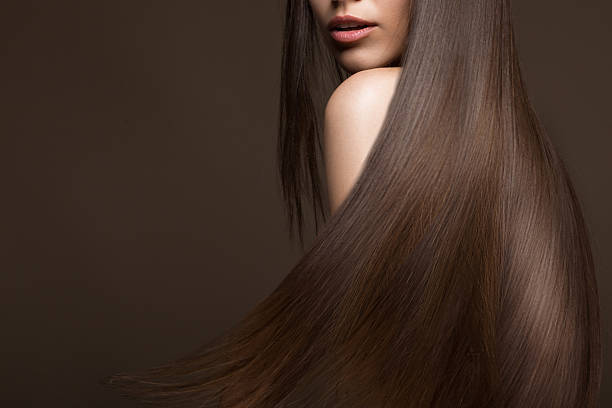Introduction
Welcome to the world of hair care, where the quest for smooth, lustrous locks is an age-old pursuit. In this comprehensive guide, we delve deep into the realm of hair smoothening, a technique that has revolutionized the way we manage and style our hair. From the intricate structure of hair strands to the various smoothening treatments available, this article unfolds the secrets behind achieving that perfect, sleek look.
Understanding Hair Structure and Types
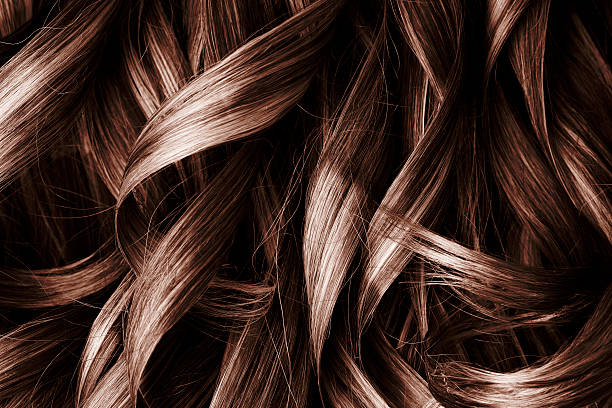
Anatomy of Hair: Cuticle, Cortex, and Medulla
Hair, often considered a crowning glory, is far more complex than it appears. Each strand comprises three layers: the cuticle, cortex, and medulla. The cuticle, the outermost layer, consists of overlapping scales, guarding the inner layers against damage. Beneath the cuticle lies the cortex, the thickest layer containing fibrous proteins and the pigment that gives hair its color. The innermost layer, the medulla, is not always present and varies in thickness and structure.
Different Hair Types and Their Characteristics
Understanding hair types is crucial for effective hair care. Generally, hair is classified into four types: straight, wavy, curly, and kinky. Each style has distinct characteristics:
- Straight Hair: Typically smooth and shiny but can be prone to oiliness.
- Wavy Hair: Has a slight curve, offering a balance between straight and curly. It can range from fine to coarse.
- Curly Hair: Displays definite loopy curls. It can be vulnerable to frizz and dryness.
- Kinky Hair: Features tight curls and is often fragile and dry.
What is Hair Smoothening?
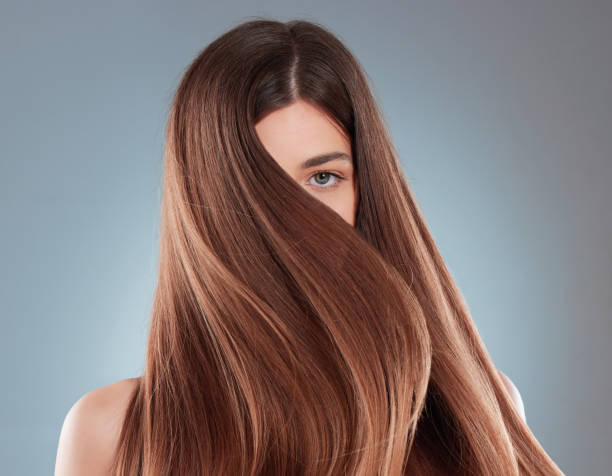
Definition and Basic Concept
Hair smoothening is a chemical process that aims to smooth and soften hair, reducing frizz and adding shine. Unlike temporary solutions, smoothening alters the hair’s structure, providing longer-lasting results. The treatment involves applying a smoothening agent, followed by a heat application to seal the smoothness.
Hair Smoothening vs. Hair Straightening
While both processes aim to tame unruly hair, they differ significantly. Hair straightening, often more intense, involves breaking and rearranging the hair’s natural bonds to achieve a permanently straight look. Hair smoothening, on the other hand, is gentler, targeting the hair’s texture and frizz, resulting in a natural-looking smoothness without altering the hair’s original pattern.
Types of Hair Smoothening Treatments
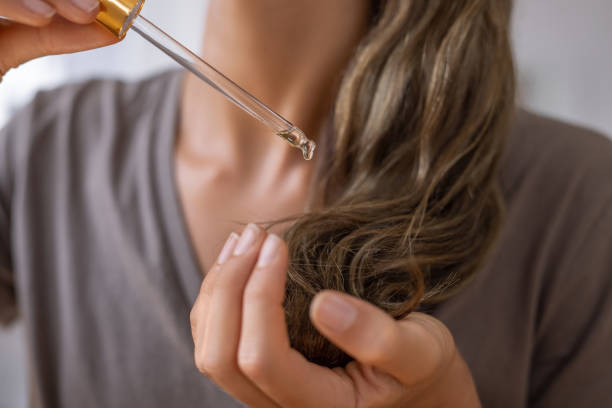
Keratin Treatment
Keratin treatments, famous for their frizz-controlling properties, involve infusing the hair with keratin, a protein naturally found in hair. The treatment fills in the porous spots in the hair caused by damage, making it smoother and more manageable.
Brazilian Blowout
The Brazilian Blowout is known for its adaptability to all hair types. This treatment forms a protective layer around each strand, eliminating frizz and sealing in moisture. The result is effortlessly manageable hair with enhanced shine.
Japanese Smoothening
Japanese smoothening, or thermal reconditioning, is more intensive, permanently straightening the hair by chemically altering its structure. It’s ideal for those seeking a pin-straight look but requires more commitment in terms of maintenance and touch-ups.
Comparison of Different Treatments
Each treatment has its unique benefits. Keratin treatments are versatile and less damaging, suitable for those seeking a natural look. Brazilian Blowouts offer more dramatic results with easier styling, while Japanese smoothening is the go-to for permanently straight hair. The choice depends on your hair type, condition, and desired outcome.
Benefits of Hair Smoothening
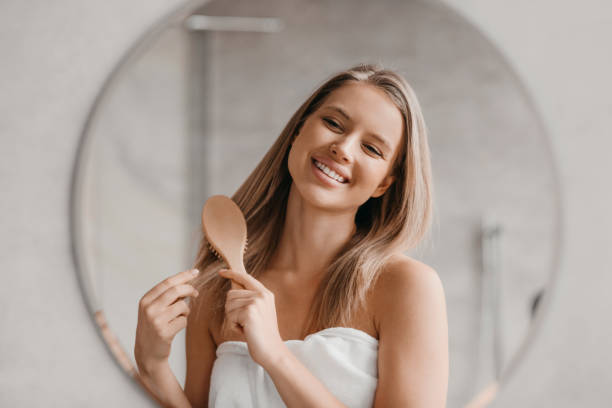
Enhanced Texture and Shine
One of the most notable benefits of hair smoothening is the remarkable improvement in hair texture and shine. This treatment smoothens the hair cuticle, which not only makes the hair strands feel silkier but also enhances their natural sheen. The result is hair that not only feels good to the touch but also has a visually appealing, glossy finish.
Reduced Frizz and Manageability
For those battling with frizz, hair smoothening is a game-changer. By aligning and sealing the hair cuticles, the treatment significantly reduces frizzy hair, making it more manageable. This means easier styling and maintenance, a relief for anyone who spends a considerable amount of time taming unruly locks.
Long-term Effects on Hair Health
While the immediate effects of hair smoothening are visibly striking, the long-term benefits for hair health are equally noteworthy. Regular smoothening treatments can help in minimizing damage caused by heat styling and environmental factors. Healthier hair is less prone to breakage and split ends, ensuring that your hair not only looks good but is also in a better condition.
The Process of Hair Smoothening

Pre-treatment Care and Preparation
Before undergoing a hair smoothening treatment, it’s essential to prepare your hair. This might include avoiding certain hair products that could interfere with the treatment and ensuring your hair is in good condition to receive the chemicals. Consulting with a hairstylist beforehand can provide personalized advice for your specific hair type.
Step-by-Step Guide to the Smoothening Process
The hair smoothening process typically involves several steps:
- Washing: The hair is thoroughly washed to remove any residues.
- Application: A smoothening solution is applied, which alters the hair structure.
- Rinsing and Drying: After the solution has been set, the hair is rinsed and dried.
- Flat Ironing: A flat iron is used to seal in the smoothness.
- Final Rinse and Conditioning: The hair is rinsed again and conditioned to restore moisture.
Post-treatment Care and Maintenance
After smoothening, specific care is needed to maintain the results. This includes using sulfate-free shampoos, avoiding chlorinated water, and minimizing the use of heat styling tools. Regular deep conditioning treatments are also recommended to keep the hair hydrated and healthy.
Choosing the Right Smoothening Treatment

Factors to Consider: Hair Type, Condition, and Lifestyle
Choosing the right hair smoothening treatment involves considering several factors:
- Hair Type: Different hair types respond differently to smoothening treatments.
- Hair Condition: Damaged or heavily processed hair may need a gentler approach.
- Lifestyle: Your daily routine and styling preferences should align with the maintenance requirements of the treatment you choose.
Consultation with a Hair Care Professional
To ensure the best results, it’s advisable to consult with a hair care professional. They can assess your hair’s condition, understand your needs, and recommend the most suitable smoothening treatment. This personalized approach helps in achieving desired outcomes while maintaining hair health.
Potential Risks and Side Effects

Chemical Exposure and Health Concerns
While hair smoothening can yield impressive results, it’s crucial to be aware of the potential risks associated with chemical treatments. Many smoothening products contain formaldehyde or formaldehyde-releasing chemicals, which can pose health risks like irritation to the eyes, skin, and respiratory system. Prolonged exposure may have more severe health implications. It’s essential to choose salons that use safe, regulated products and ensure proper ventilation during the treatment.
Damage to Hair: Myths and Realities
There’s a common misconception that hair smoothening invariably damages hair. While it’s true that chemical treatments can affect hair integrity, the extent of damage largely depends on the product’s quality and the application technique. Over-processing and improper application can lead to hair breakage, dryness, and loss of natural texture. However, when performed correctly by a professional, the risks can be significantly minimized.
Home Care Tips After Smoothening

Suitable Hair Care Products
After a smoothening treatment, the right hair care products are essential to maintain the results and keep your hair healthy. Opt for sulfate-free shampoos and conditioners, as sulfates can strip away the treatment and natural oils from your hair. Products rich in natural oils and keratin can help in maintaining the smoothness and shine.
Do’s and Don’ts for Smoothened Hair
- Do’s:
- Use a wide-toothed comb to prevent breakage.
- Apply a heat protectant before using heat-styling tools.
- Regularly use deep conditioning masks to maintain hydration.
- Don’ts:
- Avoid washing your hair frequently to prolong the treatment’s effects.
- Steer clear of chlorine exposure, which can damage smoothened hair.
- Refrain from tying your hair too tightly to prevent stress on the hair shafts.
Natural Alternatives to Chemical Smoothening

Home Remedies and Natural Ingredients
For those seeking a chemical-free approach, natural alternatives can be a great option. Ingredients like coconut milk and lemon juice, aloe vera, banana, and honey can be used to create homemade smoothening masks. These natural ingredients help tame frizz and add shine without the harsh effects of chemicals.
Pros and Cons of Natural Smoothening Methods
- Pros:
- Safer with no harsh chemicals.
- Nourishes and conditions the hair.
- It is less expensive and can be prepared at home.
- Cons:
- Results are less dramatic and not long-lasting.
- Requires regular application for sustained effects.
- It might only be effective for some hair types.
Real-life Experiences and Testimonials

Interviews with Individuals Who Have Undergone Treatment
To gain a more personal perspective on hair smoothening, let’s explore the experiences of those who have undergone the treatment. Many report a significant boost in confidence due to their hair’s improved appearance and texture. However, some caution about the need for diligent care and the potential for damage if proper aftercare is not followed. The consensus is that while the results can be transformative, it’s essential to have realistic expectations and understand the commitment involved in maintaining smoothened hair.
Before and After Comparisons
Visual comparisons often tell the most compelling story before and after photos of hair smoothening treatments typically showcase dramatic transformations. Hair that once appeared frizzy and unruly often emerges sleek, shiny, and smooth. These images, while impressive, should be viewed with the understanding that results can vary based on individual hair types and the quality of the treatment.
Renamed Conclusion: Wrapping Up: Insights on Hair Smoothening

Summarizing Key Takeaways
To wrap up, hair smoothening can offer an effective solution for managing frizz and enhancing hair texture. The benefits include improved manageability, reduced frizz, and a boost in hair shine and smoothness. However, it’s essential to be aware of the potential risks and commit to proper post-treatment care. Choosing the right treatment and products, considering natural alternatives, and understanding the maintenance involved are crucial for achieving the best results.
Final Thoughts and Recommendations
For those considering hair smoothening, it’s recommended to consult with a professional stylist to determine the best option for your hair type and lifestyle. Always prioritize the health of your hair and be prepared for the maintenance that comes with smoothening treatments. With the proper care and approach, hair smoothening can be a rewarding experience, giving you the sleek, smooth hair you’ve always desired.
Frequently Asked Questions (FAQs) About Hair Smoothening

1- Is hair smoothening safe?
Generally, it’s safe when done by a professional using quality products. Be aware of the chemicals involved and their potential effects.
2- How long does hair smoothening last?
Typically, the effects last for 2-6 months, depending on the treatment type and hair care routine.
3- Can I smoothen colored or highlighted hair?
Yes, but it’s crucial to consult with a stylist, as specific treatments might affect hair color.
4- How often should I wash my smoothened hair?
Limit washing to 2-3 times a week to prolong the treatment’s effects.
5- What are the best products for smoothened hair?
Use sulfate-free shampoos, conditioners, and products designed for chemically treated hair.
6- Can I use heat styling tools on smoothened hair?
Yes, but always use a heat protectant and minimize frequent use to prevent damage.
7- Are there natural alternatives to chemical smoothening?
Yes, ingredients like coconut milk, aloe vera, and honey can provide a milder smoothening effect.
8- What should I do if I experience hair damage post-treatment?
Consult a professional stylist and focus on therapeutic hair care treatments.
9- How do I maintain my smoothened hair?
Follow a gentle hair care routine, use the right products, and get regular trims.
10- Can hair smoothening cause hair fall?
In rare cases, improper application or overprocessing can lead to hair breakage or fall. Always go to a reputable salon.
Read also.. African Hair Braiding: A Journey Through Heritage, Art, and Identity

